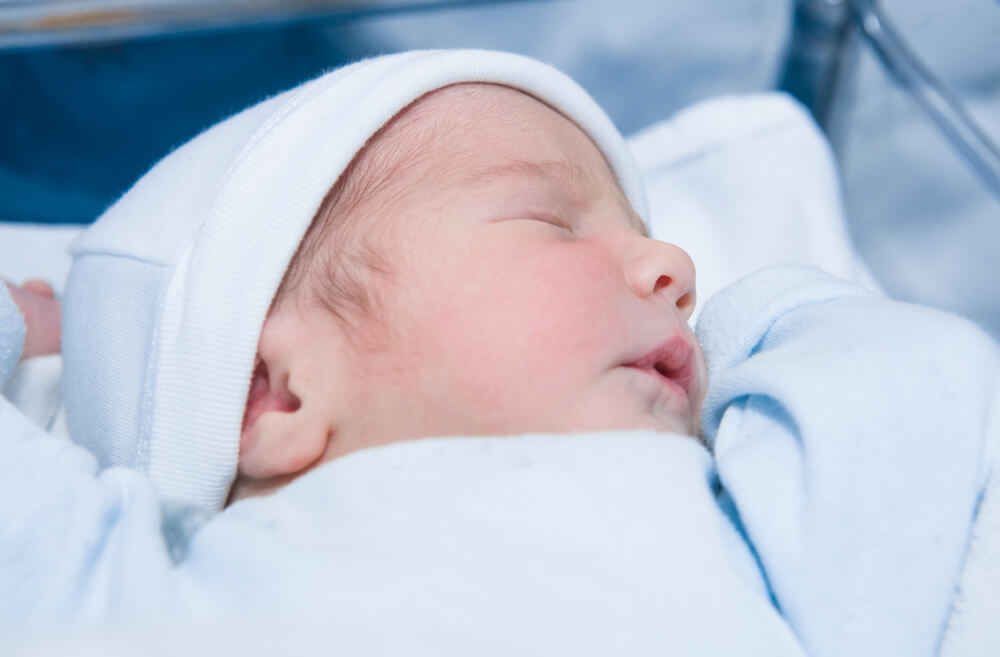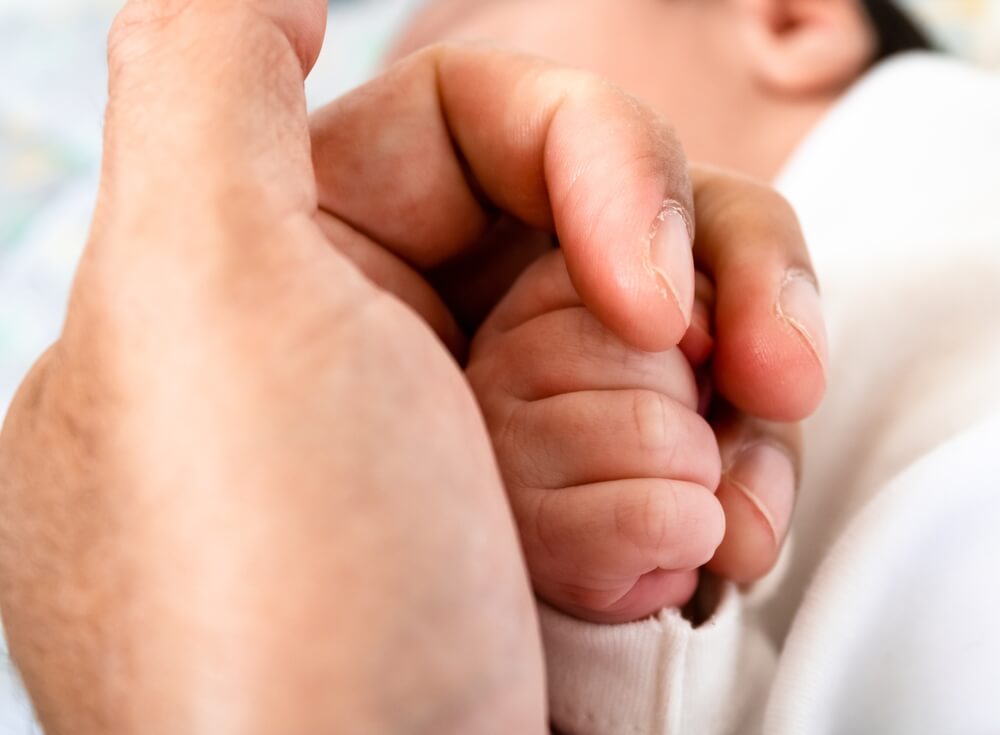The loss of a child is one of the most devastating experiences a family can go through, and Sudden Infant Death Syndrome (SIDS) remains a mysterious and heart-wrenching reality for many parents. SIDS is the sudden and unexplained death of an infant aged between one month and one year, even after a comprehensive investigation, including autopsy, scene examination, and medical history review. The cause of SIDS remains elusive, but certain risk factors and crucial preventative measures can help protect precious lives.
In this article, the team from Worldwide Pediatrics Group talks about the causes of SIDS while also addressing SIDS risks and prevention.
Understanding SIDS

SIDS typically affects infants between two and four months of age, with 90% of cases occurring before six months. It is often associated with sleep, striking babies during their slumber, which is why SIDS is sometimes referred to as “crib death” or “cot death.” However, cribs themselves are not the culprits; instead, the sleep environment can influence sleep-related causes of death. One essential way to reduce the risk of SIDS is by placing your baby to sleep on their back.
A significant distinction should be made between SIDS and Sudden Unexpected Infant Death (SUID), as not all sudden infant deaths are attributed to SIDS. SUID encompasses all unanticipated infant deaths, including those with identified causes such as suffocation and those without clear explanations like SIDS. Remarkably, about 50% of SUID cases fall under the category of SIDS.
The Prevalence of SIDS or Crib Death
SIDS stands as the leading cause of death among infants aged one month to one year in the United States, claiming the lives of approximately 2,500 infants every year. While these numbers may sound alarming, SIDS is relatively rare, and the risk of it affecting your child can be lowered by following specific preventive measures.
Unraveling the Mystery: Symptoms and SIDS Causes
What causes SIDS? Identifying SIDS can be particularly challenging since it often occurs suddenly without any forewarning signs or apparent symptoms. As for its causes, they remain enigmatic, but researchers have made strides in identifying potential risk factors. It is generally believed that infants who succumb to SIDS possess an underlying vulnerability, which can be a genetic predisposition or a brain abnormality. This vulnerability leads to sudden death when exposed to specific triggers during critical periods of brain or immune system development.
Usually, the following are the most prevalent SIDS causes.
Exposure to Smoking
Maternal smoking during pregnancy exposes the developing fetus to harmful toxins and reduces the oxygen supply. After birth, exposure to secondhand smoke further increases the risk of SIDS. Nicotine and other chemicals in tobacco can affect a baby’s respiratory and central nervous systems, making them more vulnerable to SIDS. Pregnant women and those around infants need to avoid smoking and secondhand smoke to protect against this risk factor.
Late or No Prenatal Care
Timely and comprehensive prenatal care is crucial for both maternal and infant health. Late or inadequate prenatal care can result in various complications during pregnancy, leading to an increased risk of SIDS. Early prenatal care allows healthcare providers to monitor and manage maternal health issues, screen for potential risk factors, and educate expectant parents on infant care practices, reducing the likelihood of SIDS.
Unsafe Sleeping Conditions
Placing a baby in an unsafe sleeping environment or position significantly raises the risk of SIDS. Unsafe conditions can include placing a baby to sleep on their stomach or side, using soft bedding, pillows, or bumper pads in the crib, and sleeping with the baby in an adult bed. Parents and caregivers should adhere to safe sleep guidelines to mitigate this risk, which recommends putting infants to sleep on their backs in a crib with a firm mattress and no loose bedding or soft objects.
Teen Pregnancy
Teenage mothers and their babies face unique challenges. Infants born to adolescent mothers may be at a higher risk of SIDS due to several factors, including less prenatal care, limited access to resources, and the need to balance the demands of adolescence with parenting. Comprehensive support and education for teenage mothers can help reduce this risk by ensuring proper prenatal care and safe infant sleep practices.
Preterm Birth or Low Birth Weight
Premature birth or low birth weight can increase the vulnerability of an infant to SIDS. Babies born before 37 weeks of gestation or with a low birth weight may have underdeveloped respiratory and central nervous systems, making it more difficult for them to respond to environmental stressors. Special care and monitoring are essential for these infants, and parents should strictly follow safe sleep practices to reduce the risk.
Overheating
Overheating can lead to a deep sleep, making it challenging for a baby to wake up when their body signals them to breathe. Ensuring that an infant is not overdressed or covered with excessive blankets during sleep is crucial. Maintaining a comfortable room temperature, using lightweight sleep clothing, and avoiding heavy blankets or quilts can help prevent overheating and decrease the risk of SIDS.
Alcohol Exposure
Exposure to alcohol during pregnancy can adversely affect fetal development, including the central nervous system. Babies born to mothers who consume alcohol during pregnancy are at an increased risk of SIDS. Avoiding alcohol during pregnancy is vital, as alcohol can impact the baby’s ability to regulate essential bodily functions, making them more susceptible to SIDS.
Gender
Research has shown that boys are somewhat more likely to be affected by SIDS than girls. While the reasons behind this gender difference are unclear, it emphasizes the importance of implementing safe sleep practices and risk reduction strategies for all infants, regardless of gender.
Siblings of SIDS Victims
Having a sibling who was a victim of SIDS can be emotionally challenging and also carries a higher risk for other siblings. Shared genetic factors, family environmental conditions, or caregiving practices may contribute to this increased risk. Families who have experienced SIDS should be particularly vigilant about adhering to safe sleep guidelines for all their children.
Twin Birth
Twins, especially identical twins, may be at a slightly higher risk for SIDS. Multiple births can present unique challenges due to lower birth weights, premature birth, and possible genetic factors. Parents of twins should be aware of these additional risk factors and take extra precautions, such as adhering to safe sleep guidelines for each baby and ensuring regular healthcare check-ups.
History of Breathing Issues
Babies with a history of apnea (periods of stopped breathing) or episodes of respiratory problems may face an increased risk of SIDS. These breathing difficulties may indicate an underlying vulnerability in the respiratory control system. Monitoring and timely intervention for infants with such histories are essential to reduce the risk of SIDS and ensure their well-being.
It is believed that these factors contribute to an infant’s inability to respond adequately to certain triggers and regulate essential functions such as breathing, heart rate, and temperature.
Dispelling Myths: Vaccines and SIDS
It’s important to clarify that vaccines do not cause SIDS. Extensive scientific evidence refutes any connection between childhood vaccinations and an increased risk of SIDS. In fact, research indicates that vaccines may even offer a protective effect against SIDS.
Equally, certain myths should be debunked: cribs, choking or vomiting, child abuse or neglect, infections, and illnesses are not responsible for SIDS, nor is the syndrome contagious, as it is not caused by infections.
SIDS Prevention: Essential Measures
While it may not always be possible to prevent SIDS completely, there are several actions you can take to reduce the risk. SIDS prevention starts with creating a safe sleep environment for your baby. Key preventative measures include:
- Back to Sleep: Can newborns sleep on their side? To be safe, always place your baby on their back for naps and bedtime, particularly during their first year. This sleeping position significantly reduces the risk of SIDS.
- Safe Sleep Surface: Ensure your baby sleeps on a firm mattress in a crib or bassinet that meets safety standards. The mattress should have a fitted sheet, and your baby’s head should not be able to get trapped between the crib bars.
- Eliminate Loose Bedding: Remove all loose bedding, including blankets, pillows, stuffed animals, toys, and crib bumpers, from your baby’s sleeping area. A fitted sheet is the only bedding item required.
- Appropriate Room Temperature: Maintain a cool bedroom environment for your baby, as overheating may lead to a deeper sleep, making it harder for them to wake when needed.
- No Swaddling: Once your baby can roll over, discontinue swaddling to ensure they can freely change their sleeping position.
- Vaccination: Ensure your baby receives their vaccinations on schedule, as this can reduce their risk of SIDS by up to 50%.
- Breastfeeding (Chestfeeding): Research shows that breastfeeding can lower the risk of SIDS, so if possible, opt for breastfeeding.
- Pacifier Use: Offer your baby a pacifier, as it may help keep their airway open and prevent deep sleep, thus reducing the risk of SIDS.
- Avoid Alcohol and Tobacco: Refrain from using alcohol or tobacco products during pregnancy and after your baby’s birth.
- No Breathing Monitors: Products marketed as SIDS prevention tools, such as breathing monitors, have not effectively reduced SIDS risk.
- Tummy Time: While your baby is awake and supervised, give them tummy time to promote motor development and reduce the risk of flat head syndrome.
Research on Crib Death
Regrettably, there is currently no viable method to identify infants at risk of Sudden Infant Death Syndrome (SIDS) while they are still alive. Yet, the research efforts from the Boston Children’s Hospital team are steadfastly directed toward developing such a diagnostic test, constituting a paramount objective within their SIDS research endeavors.
One particularly promising facet of Children’s research initiatives focuses on investigating an inherent neurochemical irregularity situated within the brainstem. This anomaly is believed to underlie the lapses in protective mechanisms responsible for breathing regulation, heart function, and arousal responses that are associated with SIDS.
Recent findings from post-mortem examinations have furnished the most compelling evidence thus far that Sudden Infant Death Syndrome (SIDS) has a tangible biological foundation. Dr. Hannah Kinney and her colleagues have discerned irregularities in the brainstems of infants who succumbed to SIDS. This specific brain region governs respiration, responds to excessive carbon dioxide levels, and oversees vital functions such as blood pressure and body temperature regulation – all pivotal in the sleep-wake cycle.
Their research has pinpointed diminished levels of the neurochemical serotonin and a signaling protein known as 14-3-3 within the brainstems of infants affected by SIDS. Furthermore, there was a noteworthy reduction in receptors for serotonin and another neurochemical called gamma-amino-butyric acid (GABA). These anomalies are hypothesized to impede the infants’ capacity to effectively regulate the critical bodily functions that sustain life, ultimately leading to their tragic demise.
Living With the Fear of SIDS
While complete crib death prevention is not always possible, regular well-baby care visits and vaccinations can help ensure your baby’s health and development are on track. These visits provide an opportunity to discuss any concerns and receive guidance on keeping your baby safe.
In the unfortunate event that SIDS affects your family, it is essential to remember that you are not alone. The emotional toll can be overwhelming, and feelings of anger, sadness, guilt, and shock are entirely valid. Seeking support, whether through healthcare providers or support groups for parents who have experienced a similar loss, can be instrumental in helping you navigate the grieving process and begin the healing journey.
In addition to well-baby care visits and vaccinations, you can take several crucial steps to reduce the risk of SIDS. These include ensuring a safe sleep environment for your baby, which means placing them on their back to sleep on a firm mattress with no loose bedding, pillows, or stuffed animals in the crib. Keeping your baby’s sleeping area cool and avoiding overheating is also essential, as research has shown that overheating can contribute to deeper sleep, making it harder for babies to wake up when needed.
As already mentioned above, offering your baby a pacifier during sleep can be a simple yet effective preventive measure, as it may help keep their airway open and prevent them from falling into a deep sleep. Breastfeeding, when possible, has been associated with a reduced risk of SIDS, as it provides essential nutrients and immune support to your baby.
Avoiding exposure to smoking, either during pregnancy or after birth, is paramount, as it is a significant risk factor for SIDS. The harmful effects of passive smoke exposure on babies cannot be underestimated, so it’s crucial to maintain a smoke-free environment.
Lastly, maintaining good prenatal care, especially for young mothers and those with specific risk factors, is essential in reducing the risk of SIDS. Early and proper prenatal care helps promote the overall health of both mother and baby, reducing potential risk factors associated with SIDS.
Taking Action to Protect Precious Lives

Sudden Infant Death Syndrome remains a challenging and heart-wrenching phenomenon, but by understanding the risk factors, implementing essential preventive measures, and dispelling myths, parents, and caregivers can take meaningful action to protect the precious lives of their little ones. By familiarizing themselves with the risk factors associated with SIDS, such as sleeping position, sleep environment, and maternal habits during pregnancy, parents can create a safer sleep space for their infants.
Implementing recommended preventive measures, like placing babies on their backs to sleep, using firm mattresses, and avoiding the presence of loose bedding and soft objects in the crib, can significantly reduce the risk of SIDS. These actions empower parents to make informed decisions prioritizing their baby’s safety.
Dispelling myths and misconceptions about SIDS is equally essential. Parents should be aware that vaccines do not cause SIDS and that SIDS is not a contagious condition. Understanding the science behind SIDS and the importance of vaccination can provide parents with the peace of mind they need to make informed healthcare decisions for their children.
In conclusion, while SIDS may continue to be a challenging and heart-wrenching concern for parents, taking proactive steps to protect their precious lives is within reach. Knowledge, prevention, and proper healthcare practices are the cornerstones of reducing the risk and ensuring that more infants grow up healthy and strong.
That said, if you want to learn more about SIDS or want to take advantage of our general pediatric care services in Plantation and Doral, Florida, feel free to schedule an appointment with us at any time.



